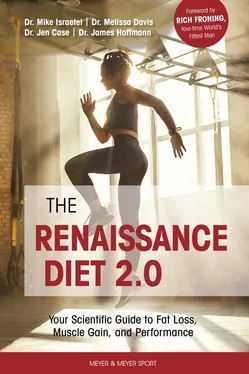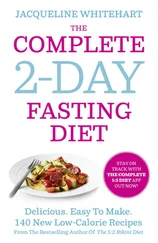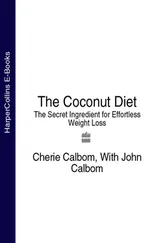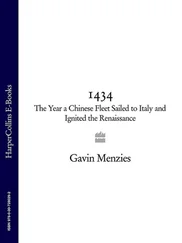Some have argued for fats as a primary fuel source for athletic performance, most recently for ultra-endurance performance. Proponents of this often argue that such performance benefits are not truly realized until an individual becomes “fat adapted” by staying away from carbohydrates almost entirely for weeks on end. As of this publication, there is very little evidence that fat is a high-performance fuel and a wealth of evidence that carbohydrates are the better performance fuel source. As important as fats are, they are not the best performance fuel, so recommendations for fat consumption ranges for sport are very similar to those for general health. CCH based on sport and recommendations for compliance on particular diet phases do alter these recommendations slightly, and these are discussed next.
Fat Needs for Endurance Sports, Team Sports, and Strength and Power Sports
Due to carbohydrate needs and the CCH constraint, the fat intake recommendation for endurance athletes is very close to the minimum 0.3 g per pound of bodyweight per day. For team sports and strength and power sports, the recommended range of fat intake is anything between minimum fat intake and CCH maximum, assuming that adequate amounts of proteins and carbs are already being consumed. The only difference here is that team sport and strength and power athletes, depending on training phases, may have periods when carbohydrate intakes can be dropped to allow room for more fat without any detriment.
Fat Needs on a Hypocaloric Diet
On one hand, keeping fat intake higher on a hypocaloric diet can mean a higher flexibility in food choices. This can result in better adherence and thus success. On the other hand, the lower the calorie “ceiling” in your diet, the more necessary carbohydrate becomes to prevent catabolism and drive training energy, and the more sense it makes to preferentially cut fat for calorie reductions. We recommend that calorie reductions be achieved via reductions in fat to the minimum level needed for health.
Fat Needs on a Hypercaloric Diet
Maximizing carbohydrate intake on a diet geared toward muscle gain is optimal. Keeping fats at or near minimum to allow more room for carbohydrates is beneficial here; however, in practical terms we know that the caloric surplus in a hypercaloric diet is of greater importance than macronutrient amounts for muscle gain. Fats have distinct practical advantages that help a dieter get in the needed calories to maintain a surplus. Fats are tasty and easy to add to food, making eating more food easier and more fun. Additionally, fats occupy less space in the stomach, so that eating more calories from fat can make a hypercaloric diet more comfortable. For beginners and intermediates, we recommend generating a calorie surplus with any of the three macros (proteins, fats, or carbs) as long as protein and carb requirements are being met. For individuals who struggle with eating enough food to gain weight, more fat might make gaining easier. For more advanced trainers and those without problems eating, keeping fat close to their minimum values (0.3 g per pound of bodyweight per day) and achieving the hypercaloric condition with carbohydrate might be best practice.
Figure 3.6 Best recommended ranges of macronutrient intake for body composition or performance under various sport and dietary circumstances .
Keep in mind that running a hypocaloric or hypercaloric diet while training in a specific sport might require trade-offs in performance for diet progress or vice versa, so choose the range appropriate to your prioritized goal. Optimal macronutrient amounts might change across training phases in a specific sport. For example, endurance sport will lean toward the higher end of the recommended carbohydrate range during peak training and competition, and team and strength and power sport recommendations will lean toward the lower range during more low-volume training phases and so on.
HIERARCHY OF MACRONUTRIENTS
Protein > Carbohydrate
In most cases, the accrual and maintenance of muscle mass is the most important goal. In this respect, protein is simply more determinative than carbs. While carbs are anti-catabolic and provide anabolic signaling, protein is literally the building block for muscle–carbs just work as supporters and facilitators, albeit effective ones. After calories, protein should be first priority in most cases. There are some exceptional situations in which carbs are temporarily just as important or more important than protein intake in the diet.
Instances When Carbohydrate > Protein
The most clear-cut case in which carb intake outranks protein intake is in endurance athletics. In high-volume endurance training, glycogen and blood glucose are depleted so fully and rapidly that eating enough carbs to counterbalance this is an intense uphill battle. If protein is under-consumed, while the effects will be negative, they will mostly manifest over weeks and months as muscle mass declines. If insufficient carbs are consumed, there will be an immediate negative effect on training quality and performance. As an endurance athlete, you should be concerned with protein intakes being above the minimal recommended values on average in the long term, but for hard training periods and races, temporarily prioritizing carbohydrates can be beneficial for optimum performance. Additionally, when recovery from intense competitions or training sessions is paramount, such as during a team’s competitive season, carbohydrates may take a priority over protein.
Fats are a very poor source of fuel for high-intensity athletic performance. Fats can be a fuel for very low-intensity movements, such as walking or slow jogging, explaining why ketogenic (low-carb) diets have fared better in ultra-endurance sports than they have in most every other sport. Performances even in these extreme endurance races, however, still greatly rely on endogenous carbohydrate stores and benefit from high carbohydrate dietary conditions. Since most sport activity is best powered by carbs, consuming them is more determinative of performance (both in training and competition) and is thus a priority over fat. In addition, carbohydrate is a better fuel source for the nervous system, which governs mental aspects of performance in sport. Carbs exert more beneficial effects on the body in abundant quantities than do fats and for that reason are ranked higher in priority within the macros.
•Protein, carbohydrate, and fat comprise the macronutrients that contribute to the vast majority of daily calories.
•Macronutrients need to be consumed in large amounts (on the order of grams) daily for survival.
•Protein is the most important macronutrient for body composition change and performance, followed by carbohydrate, and then fat.
•Protein provides the raw materials for muscle growth and repair and is essential to virtually all physiological systems.
•Recommended protein intake can range between 0.5 to 1.5 g per pound of bodyweight per day, with 1.0 g per pound per day on average, covering a large spectrum of athletic scenarios.
•Carbohydrate is the primary source of energy for all exercise and sporting endeavors, as well as the preferred source of energy for the nervous system.
•Carbohydrate is essential to both enhancing the performance of exercise and stimulating anabolism.
•Carbohydrate intake is directly proportional to training workload and can range from virtually no intake to over 5.0 g per pound of bodyweight per day.
•Most athletic endeavors will have carbohydrate intakes ranging from 1.0 to 3.0 g per pound of bodyweight per day, outside of very low or very high activity days.
Читать дальше












